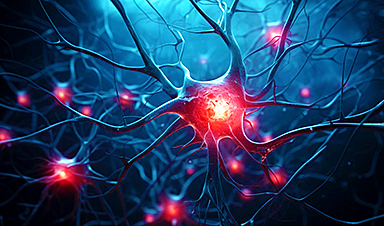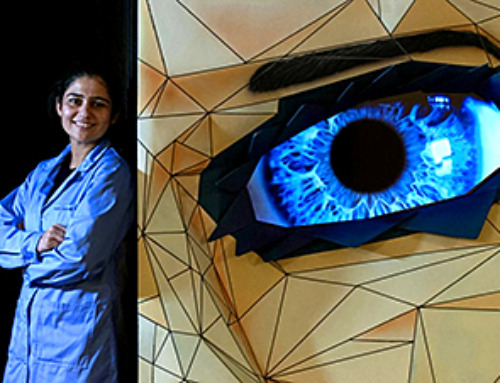Work could lead to the discovery of new therapeutic targets.
For the first time, researchers have identified “molecular markers” linked to degeneration—detectable changes in cells and their gene-regulating networks—that are common across several types of dementia affecting different brain regions. Significantly, the UCLA-led study, published in the journal Cell, also discovered markers unique to specific forms of dementia. These combined findings could represent a major shift in the search for causes, treatments, and cures for these conditions.
“This work provides new insight into the mechanisms of neurodegeneration and identifies new candidate pathways for the development of therapeutics,” said senior and corresponding author Daniel Geschwind, MD, PhD, a professor of human genetics, neurology, and psychiatry at the David Geffen School of Medicine at UCLA and director of the Institute for Precision Health at UCLA Health.
Research Approach: Going Beyond Traditional Case-Control Studies
Previous studies have focused on a single disorder at a time. Called case-control studies, they compared “diseased” cells with normal ones and often just focused on one brain region. But in this research, the scientists also looked at molecular changes across three different forms of dementia that can involve “tau pathology,” the accumulation of abnormal tau protein in vulnerable regions that differ across disorders.
They performed single-cell genomic analysis on more than 1 million cells to identify distinct and shared molecular markers in three related conditions: Alzheimer’s disease, frontotemporal dementia (FTD) and progressive supranuclear palsy (PSP). In addition to validating changes previously observed in AD, they identify dozens of cell types whose changes are shared across multiple dementias and several cell types whose changes in disease were specific to a single disorder, many of which had not been previously identified.
The Role of Brain Regions and Cells in Neurodegeneration
“Different conditions have different patterns of degeneration. We reasoned that comparison across cases from different disorders, in addition to the typical case-control comparison, would be useful to identify shared components of neurodegeneration and to understand cell type-specific changes that underlie all these conditions,” Geschwind said, adding that most studies profile only one brain region – typically the frontal lobe.
“In dementia and neurodegenerative disease more generally, specific brain regions and cells are most vulnerable in each disease. This is what leads to the different symptoms and signs across disorders,” Geschwind said. “Since regional vulnerability is a core feature of the disorders, we reasoned that studying more than one region would give new insights, and that was the case. In addition to identifying shared and distinct molecular markers, we showed how genetic risk relates to these disease-specific pathways that are altered in the brain.” Using this study design, the investigators found four genes that marked vulnerable neurons across all three disorders, highlighting pathways that could be used to develop new therapeutic approaches.
First author Jessica Rexach, MD, PhD, an assistant professor in neurology and neurobehavioral genetics at the David Geffen School of Medicine at UCLA, said this work “profoundly shifted” her perspective on the mechanisms underlying disease susceptibility.
“It is remarkable and humbling to have identified several distinct molecular differences that set apart cells from individuals with one form of dementia from those with closely related diseases. Although these disease-specific differences were among the minority of the changes observed in diseased brains, they were strongly linked to heritability. This surprising finding opens new avenues for understanding why and how certain genes influence the risk of developing one brain disease over another closely related condition.”
Combined, Alzheimer’s, FTD, and PSP affect more than 28 million people worldwide. Although Alzheimer’s has been studied extensively, there is no cure, and existing, approved medications only slow disease progression. There are few clinical trials available for FTD and PSP.
New Avenues for Therapeutic Development
“We have created an extensive data resource that paves the way for identifying and exploring new therapeutic candidates for neurodegenerative dementias,” Rexach said. “We have pinpointed specific molecules that can now be advanced as potential novel regulators of disease in experimental systems – importantly, grounded in primary human disease data. Additionally, we’ve uncovered unexpected conceptual phenomena that may explain why certain cells exhibit more resilience or vulnerability to disease, and we’re eager to investigate these findings further.”
The researchers:
- Identified unique changes specific to Alzheimer’s disease and demonstrated that several findings in Alzheimer’s were also observed across the other disorders, identifying targets for therapeutic development.
- Found that “cellular resilience programs” – molecular mechanisms that support cells in response to injury – activated or failed differently, when comparing the same cell types across disorders.
- Were surprised to discover that each of the three disorders had changes in cells of the primary visual cortex – the area of the brain that processes visual information and which was thought to be unaffected by dementia. In PSP, this discovery revealed previously unknown changes in brain cells called astrocytes.
- Identified specific changes in the expression of certain tau-related genes and others in PSP. These appear to correlate with the unique pattern of brain cell degeneration that is observed in PSP.
The authors, who will next begin experiments to validate the causal nature of their findings, anticipate the study will inspire similar cross-disorder research.
“These data show that known risk genes act in specific neuronal and glial states or cell types that differ across related disorders. Moreover, causally associated disease states may be limited to specific cell types and regions,” the Cell article concludes. “This underscores the importance of examining multiple brain regions to understand causal disease pathways at the cellular level, which we show provides a clearer picture of shared and disease-specific aspects of resilience and vulnerability to inform the therapeutic roadmap.”
Reference: “Cross-disorder and disease-specific pathways in dementia revealed by single-cell genomics” by Jessica E. Rexach, Yuyan Cheng, Lawrence Chen, Damon Polioudakis, Li-Chun Lin, Vivianne Mitri, Andrew Elkins, Xia Han, Mai Yamakawa, Anna Yin, Daniela Calini, Riki Kawaguchi, Jing Ou, Jerry Huang, Christopher Williams, John Robinson, Stephanie E. Gaus, Salvatore Spina, Edward B. Lee, Lea T. Grinberg, Harry Vinters, John Q. Trojanowski, William W. Seeley, Dheeraj Malhotra and Daniel H. Geschwind, 11 September 2024, Cell.
DOI: 10.1016/j.cell.2024.08.019
Funding for this work was provided by Roche Pharmaceuticals (D.H.G., D.M.), BrightFocus (D.H.G., J.E.R), Rainwater Charitable Foundation (D.H.G. and W.W.S), NIH grants (K08 NS105916 (J.E.R), R01 AG075802 (J.E.R., L.T.G), 5UG3NS104095 (D.H.G)), and John Douglas French Alzheimer’s Foundation (J.E.R.). The UCSF Neurodegenerative Disease Brain Bank is supported by NIH grants AG023501 and AG019724, the Rainwater Charitable Foundation, and the Bluefield Project to Cure bvFTD. The University of Pennsylvania Center for Neurodegenerative Disease Research is supported by NIH grant P01AG066597, P30AG072979 and U19AG062418.
Disclosures: Geschwind has received research funding from Hoffman-LaRoche for this project.
(D.H.G. has received research funding from Hoffman-LaRoche for this project. D.C. is a full-time employee of F. Hoffmann-La Roche, Basel, Switzerland. During the study period, D.M. was a full-time employee of F. Hoffmann-La Roche, Basel, Switzerland, and is currently a full-time employee of Biogen, Cambridge, MA, USA.)
News
Breakthrough Drug Restores Vision: Researchers Successfully Reverse Retinal Damage
Blocking the PROX1 protein allowed KAIST researchers to regenerate damaged retinas and restore vision in mice. Vision is one of the most important human senses, yet more than 300 million people around the world are at [...]
Differentiating cancerous and healthy cells through motion analysis
Researchers from Tokyo Metropolitan University have found that the motion of unlabeled cells can be used to tell whether they are cancerous or healthy. They observed malignant fibrosarcoma cells and [...]
This Tiny Cellular Gate Could Be the Key to Curing Cancer – And Regrowing Hair
After more than five decades of mystery, scientists have finally unveiled the detailed structure and function of a long-theorized molecular machine in our mitochondria — the mitochondrial pyruvate carrier. This microscopic gatekeeper controls how [...]
Unlocking Vision’s Secrets: Researchers Reveal 3D Structure of Key Eye Protein
Researchers have uncovered the 3D structure of RBP3, a key protein in vision, revealing how it transports retinoids and fatty acids and how its dysfunction may lead to retinal diseases. Proteins play a critical [...]
5 Key Facts About Nanoplastics and How They Affect the Human Body
Nanoplastics are typically defined as plastic particles smaller than 1000 nanometers. These particles are increasingly being detected in human tissues: they can bypass biological barriers, accumulate in organs, and may influence health in ways [...]
Measles Is Back: Doctors Warn of Dangerous Surge Across the U.S.
Parents are encouraged to contact their pediatrician if their child has been exposed to measles or is showing symptoms. Pediatric infectious disease experts are emphasizing the critical importance of measles vaccination, as the highly [...]
AI at the Speed of Light: How Silicon Photonics Are Reinventing Hardware
A cutting-edge AI acceleration platform powered by light rather than electricity could revolutionize how AI is trained and deployed. Using photonic integrated circuits made from advanced III-V semiconductors, researchers have developed a system that vastly [...]
A Grain of Brain, 523 Million Synapses, Most Complicated Neuroscience Experiment Ever Attempted
A team of over 150 scientists has achieved what once seemed impossible: a complete wiring and activity map of a tiny section of a mammalian brain. This feat, part of the MICrONS Project, rivals [...]
The Secret “Radar” Bacteria Use To Outsmart Their Enemies
A chemical radar allows bacteria to sense and eliminate predators. Investigating how microorganisms communicate deepens our understanding of the complex ecological interactions that shape our environment is an area of key focus for the [...]
Psychologists explore ethical issues associated with human-AI relationships
It's becoming increasingly commonplace for people to develop intimate, long-term relationships with artificial intelligence (AI) technologies. At their extreme, people have "married" their AI companions in non-legally binding ceremonies, and at least two people [...]
When You Lose Weight, Where Does It Actually Go?
Most health professionals lack a clear understanding of how body fat is lost, often subscribing to misconceptions like fat converting to energy or muscle. The truth is, fat is actually broken down into carbon [...]
How Everyday Plastics Quietly Turn Into DNA-Damaging Nanoparticles
The same unique structure that makes plastic so versatile also makes it susceptible to breaking down into harmful micro- and nanoscale particles. The world is saturated with trillions of microscopic and nanoscopic plastic particles, some smaller [...]
AI Outperforms Physicians in Real-World Urgent Care Decisions, Study Finds
The study, conducted at the virtual urgent care clinic Cedars-Sinai Connect in LA, compared recommendations given in about 500 visits of adult patients with relatively common symptoms – respiratory, urinary, eye, vaginal and dental. [...]
Challenging the Big Bang: A Multi-Singularity Origin for the Universe
In a study published in the journal Classical and Quantum Gravity, Dr. Richard Lieu, a physics professor at The University of Alabama in Huntsville (UAH), which is a part of The University of Alabama System, suggests that [...]
New drug restores vision by regenerating retinal nerves
Vision is one of the most crucial human senses, yet over 300 million people worldwide are at risk of vision loss due to various retinal diseases. While recent advancements in retinal disease treatments have [...]
Shingles vaccine cuts dementia risk by 20%, new study shows
A shingles shot may do more than prevent rash — it could help shield the aging brain from dementia, according to a landmark study using real-world data from the UK. A routine vaccine could [...]





















